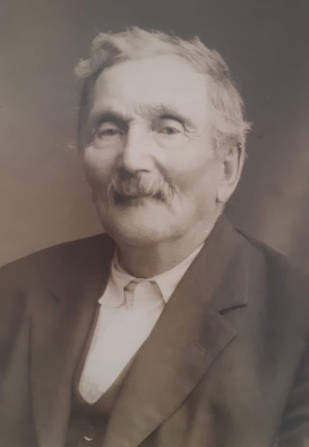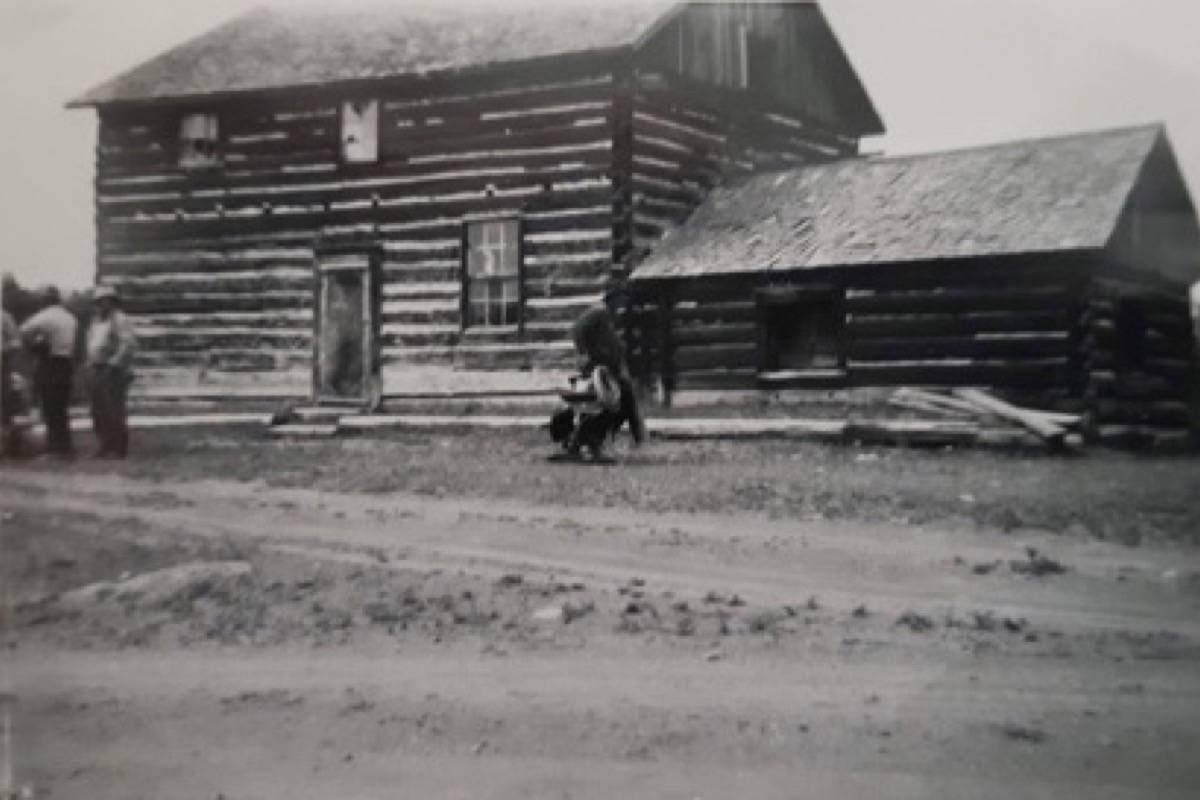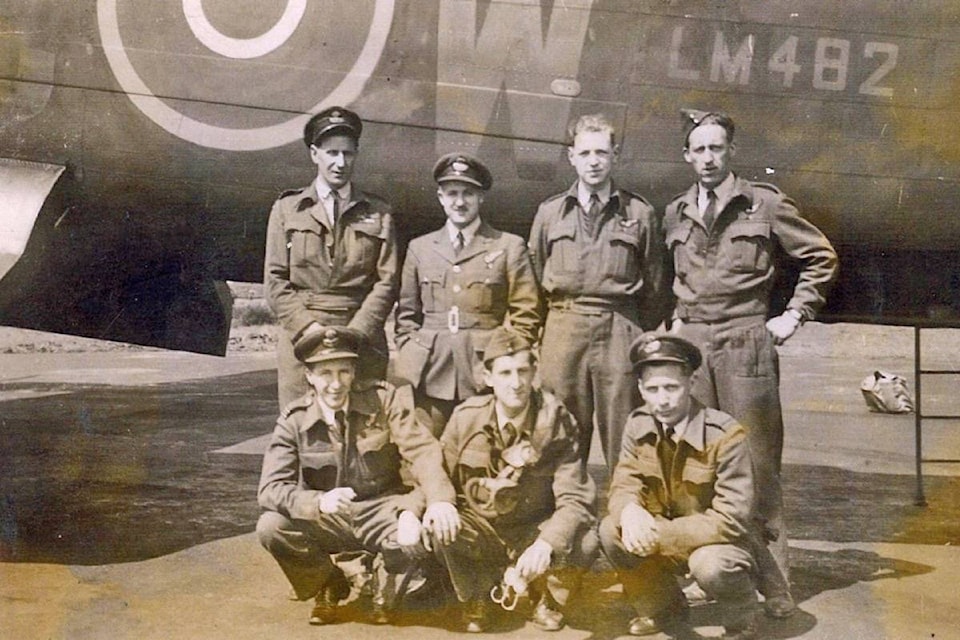By Maurice Guibord
A Vancouver society that preserves the province’s Francophone history is looking for descendants of Interior pioneer Moses Pigeon, to assist them in the creation of an online virtual exhibition looking at the Francophone ranchers of B.C.
The Francophone Historical Society of B.C. (Société historique francophone de la Colombie-Britannique, SHFCB) says that many might be surprised to learn that there were several French or French-Canadian men who launched ranches in the Interior during the 1860s and 1870s. The project will look at the original families and their descendants, showing how each family contributed to the development of the province.
In only one case — the Guichon family near Merritt — did the French language survive until quite recently, but the project looks beyond that linguistic link.
In conjunction with Virtual Museum Canada, the exhibition will be launched in bilingual format by the end of the year, and will be freely available to all. It will cover the Minnabarriet family of Spences Bridge and the Basque Ranch, the Isnardy family of Chimney Creek, the Boucherie family of Rutland, the Lequime family of Kelowna, the Versepeuch/Gaspard families of Dog Creek, the Patenaude family of Woodjam Ranch and 153 Mile Ranch, the Guichon family of Quilchena, and the families of brothers Napoléon and Moïse (Moses) Pigeon, of the Meadow Lake Ranch and the Grandview Ranch, respectively.
Loretta Ferguson, a descendant of Napoléon Joseph Pigeon, and Edith McLorn of the South Cariboo Historical Museum Society have provided valuable assistance. However, the SHFCB is still in need of key information about the Pigeon families, and would welcome anyone who has knowledge of their history. In particular, the society is hoping to interview a descendant of Moïse in order to fill in some key gaps.
Brothers Joseph Moïse (1841–1900) and Joseph Napoléon (1843–1935) Pigeon were originally from St. Damase and Roxton Pond, Québec. They were among the very first settlers in the Clinton and Dog Creek areas of the Cariboo, around 1890.
In Québec, Napoléon married Athénaïse Blain, creating the European branch of the family with five children: Napoléon Jr., Pierre François-Xavier Ernest “Peter”, “Willie”, “Frank”, and Levi. They established the Meadow Lake Ranch near Dog Creek, and in retirement Napoléon, pre-deceased by his wife, left the ranch in the hands of Peter and his wife to open the Maple Leaf Hotel at Harrison Hot Springs.
Peter had a difficult family life. His first wife, Adélina Cadieux, found conditions at the ranch so harsh that she ended her own life. Ernest took their three girls back to Québec and left them in the care of nuns. When he and his second wife, Marie Anna Lambert of Granby, Québec, went to recover the girls, the nuns refused to give them up, which turned him against the Church. Peter had to kidnap one daughter to get her back. He and Marie Anna had seven children, eventually moving in with Grandpa “Joe” to help with the ranch in B.C.
Peter yearned for a quick fortune, so he was off gold panning most of the time, leaving his wife to run the ranch. During his long absences, Marie Anna suffered because her lack of English left her isolated. The couple eventually separated, and she took the children back to Granby. Only at Napoléon’s death did she return to claim her part of the family ranch.
Both Peter and his son Rosaire also became guides for wealthy Americans hunters. Rosaire’s son Clarence, however, was to live a much greater adventure away from the ranch.
In the veins of Clarence ran the blood of a rancher, just like his father Rosaire and his great-grandfather Napoléon. With only four years of schooling, he worked his way through several ranches, including the famous Gang Ranch and the O.K. Ranch.
In 1942 he enlisted in the Navy, working on ships patrolling the West coast. In 1945 he was hired as crewman of the RCMP wooden schooner St. Roch during its “Operation Muskox” expedition in the Northwest Passage, in Canada’s Arctic waters. The ship was stuck in the ice for 11 days, so the crew were flown off to safety. This was the largest military exercise ever held in the Canadian Arctic and the fourth of four military expeditions held in the region in the 1940s. After the war, he worked on the monolithic dam projects at Hudson Hope and Revelstoke.
The lure of ice-covered surfaces later also lured Joe Hicketts, one of Rosaire’s descendants, but this time to hockey rinks. Originally from Kamloops, Hicketts represented Canada twice at the IIHF World Junior Championship, winning gold in 2015 and serving as alternate captain for the team in 2016. He then played for the Detroit Red Wings for four seasons as of 2017, adding to the pride of the B.C. ranching community that still claimed him as their own.
At Clinton, Napoléon’s brother Moïse married Teresa Philipini, daughter of Mr. Simone Philippi from Switzerland, and of Stupina, a woman from the Alkali Lake Band, thus giving birth to the branch of the family that claimed First Nations status.
Moïse and Teresa established the Grandview Ranch, where they raised eight children: Peter “Pete” Moïse, Claude, Percival “Percy”, Louis, John Edgar “Eddie”, Teresa, Agnes, and Raymond “Ray”.
In an undated interview, Sidney “Sid” Pigeon (1917– ?), son of Claude and Rosalie Delima Gillo (from the Montreal area), stated that women were the true pioneers of the Cariboo, given that beyond raising the children, they often ran the ranches after their husband’s death. Such was the case for Sid’s grandparents: Moïse was 43 when he married 15-year-old Teresa. This common age difference usually led to the husband dying well before his family was fully grown up.
At Moïse’s death, Teresa passed the ranch on to her unmarried son Peter and moved to Clinton with her other children, where she bought and ran the Clinton Hotel. Her son Sidney was kept warm laying in an apple crate behind the famous Clinton stove, looked after by the Chinese servant while his mother served tables.
Sid also confided that though no one really talked about it, “There was no way that you could operate a ranch without the assistance of Indians. Indians worked on the ranch because the Indian has been here forever, and he knew what to do.”
A tangible modern link to this family in Williams Lake is Pigeon Street, named after them.
The sheen of gold was part of the job for Jessie Sinclair, wife of Leslie Claude, grandson of Moïse. Not only did she serve for 32 years as the only female Government Agent in the province (1927–1959), but she was also its first female gold commissioner in Quesnel.
Percy Edgar Pigeon, for his part, became a celebrated Canadian war hero. The son of Eddie and Elizabeth Victoria Hamilton and grandson of Moïse and Teresa, he became a wireless operator and air gunner for Canada during the Second World War. In 1942, he and three others formed a crew that flew more than 50 missions over the next two years.
On May 16, 1943, they were part of a force of Lancasters directed to attack and breach dams in the industrial heartland of Germany along the Ruhr valley using purpose-built “bouncing bombs”. Due to their successful raids, they became known as the “Dambusters”. The breaching of the dams caused significant damage to the hydroelectric grid and canals system, thereby impeding the German war machine. Forty percent of the men in the attacking force were shot down and perished during the attacks.
The exploits of the Dambuster Squadron became the subject of the popular 1955 British film The Dam Busters, and the surviving participants, including Percy, were invited to its London premiere.
Pigeon was awarded the Distinguished Flying Cross. He remained with the RCAF at its Maritime Air Command until 1962.
These varied stories clearly show that the Pigeon family is already the stuff of legends, with strong men and women unafraid of taking on new challenges. Please help us to complete the picture we are creating of this family. If you have any information about the Pigeon family, please contact the SHFCB’s Maurice Guibord at direction@shfcb.ca, or cal (604) 771-3047.
Maurice Guibord is directeur general of the Société historique francophone de la Colombie-Britannique.
editorial@accjournal.ca
Like us on Facebook and follow us on Twitter


